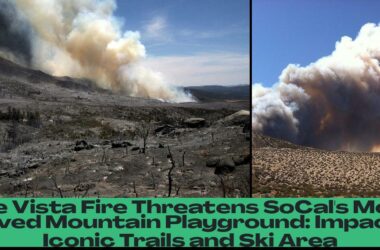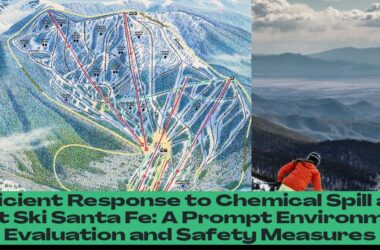Where’s our Ski Train?
Picture this: you’re a skier, eager to hit the slopes. You don’t want to be stuck in traffic, battling for parking, and facing the exhaustion of a long drive. Instead, you envision a relaxing journey, a scenic train ride through breathtaking landscapes, arriving at the mountain with a smile on your face, ready to carve your way down the pristine powder. You’re not alone in this dream. It’s a vision shared by many skiers, longing for a more sustainable and enjoyable way to reach their snowy paradise.
But the reality is, in the United States, the ski train is a relic of the past, a faded memory from a time when passenger rail was king. While Europe boasts extensive and efficient rail networks, connecting cities and mountains with ease, the U.S. has largely abandoned this mode of transportation in favor of automobiles and airplanes. So, the question lingers: Where’s our dang ski train?
The story of the ski train’s decline is a fascinating tale intertwined with the evolution of transportation in America. In the early 1900s, passenger rail was the dominant force, with a sprawling network of tracks crisscrossing the nation. This era witnessed the rise of ski trains, connecting urban centers to burgeoning ski resorts. Sun Valley Resort, a glamorous ski destination in Idaho, was strategically built near a Union Pacific Railroad line, capitalizing on the popularity of skiing and the desire for a luxurious escape during the Great Depression.
In the East, the Boston and Maine Railroad carried skiers from bustling cities to the mountains, fueling the growing passion for this winter sport. Colorado’s Winter Park Resort, nestled in the breathtaking Rocky Mountains, owes its existence to a group of train-hopping skiers who discovered the beauty of the area near the Moffat Tunnel. These early skiers, often affluent and politically influential, enjoyed the convenience of riding the train to their chosen destination, even if it meant chartering a special stop.
- Ski trains were a popular mode of transportation in the early 1900s, connecting urban centers to ski resorts like Sun Valley Resort and Winter Park Resort.
- The decline of ski trains in the United States can be attributed to the rise of automobiles and airplanes, which offered more freedom and flexibility to travelers.
- Europe boasts extensive and efficient rail networks for skiers, while the U.S. has largely abandoned passenger rail in favor of other modes of transportation.
- The story of the ski train’s decline is intertwined with the evolution of transportation in America, reflecting changing preferences and advancements in travel technology.
- Many skiers long for a more sustainable and enjoyable way to reach their snowy paradise, envisioning a relaxing train ride through breathtaking landscapes to the mountains.
The Rise of the Automobile and the Decline of the Ski Train
However, the rise of the automobile began to shift the landscape. The freedom and flexibility offered by cars, combined with the burgeoning network of roads, made it increasingly attractive for travelers. The introduction of airplanes, with their promise of faster travel times, further eroded the dominance of passenger rail. The passage of the Federal-Aid Highway Act of 1956, a monumental investment in expanding the national highway system, solidified the shift towards car culture.
The decline of passenger rail also coincides with a change in the industry’s structure. In 1970, the U.S. government established Amtrak, a government-owned passenger rail company, effectively ending the era of private passenger rail lines. This move sought to address the financial challenges faced by private rail companies, allowing them to focus on freight transportation, which was deemed more profitable. While Amtrak provided a lifeline for passenger rail, it struggled to compete with the dominance of cars and planes.
A Glimpse of Hope: The Return of the Ski Train?
Despite the decline of passenger rail, there are signs of a resurgence in interest. The Northeast corridor, with its high population density, remains a stronghold for Amtrak, generating a significant portion of its revenue. In Colorado, the Winter Park Express, a modern-day ski train, connects Denver to Winter Park Resort, offering skiers a convenient and scenic alternative to driving. The train’s popularity is evident in the impressive number of riders it carries, although it remains a fraction of the overall skier traffic in Colorado.
Beyond Colorado, initiatives like Brightline’s ambitious bullet train project connecting Las Vegas and Los Angeles, and the $66 billion allocated to new rail projects through the Bipartisan Infrastructure Law, signal a renewed commitment to passenger rail in the U.S. However, these projects face significant challenges. The U.S., unlike many European countries, lacks a consistent investment in passenger rail, often prioritizing car-centric infrastructure. The cost of constructing new rail lines in mountainous regions, with the need for tunnels and challenging terrain, further complicates the equation.
The Future of the Ski Train: More Than Just a Dream
While the return of the ski train, as we knew it, may be a distant dream, the potential for a more sustainable and enjoyable mode of transportation for skiers remains. The allure of riding a train through picturesque landscapes, with the promise of a stress-free journey, is undeniable. But realizing this dream requires a shift in priorities, a renewed focus on investing in passenger rail, and a recognition of its importance in creating a more interconnected and sustainable society. The future of the ski train hinges on our willingness to embrace a different perspective, one that values public transportation and its role in shaping a greener and more equitable future.
Beyond the Ski Train: Exploring Alternative Solutions
While the ski train may be a distant dream for many, alternative solutions are emerging to address the challenges of ski transportation. Gondolas, like the one proposed for Little Cottonwood Canyon in Utah, offer a high-capacity and environmentally friendly option. Buses and vans, while perhaps less glamorous than trains, provide a more efficient and flexible approach for reaching ski resorts, especially in areas with lower population density.
The key takeaway is that the quest for a better way to get to the mountains is far from over. Whether it’s a ski train, a gondola, or a fleet of buses, the pursuit of sustainable and efficient transportation solutions is essential for the future of skiing and the health of our planet. The journey towards a more accessible and enjoyable ski experience is ongoing, and it’s a journey that requires creativity, innovation, and a commitment to prioritizing sustainable transportation options.
Ultimately, the dream of riding a ski train through snow-covered landscapes is a powerful reminder that progress is possible. It’s a reminder that we can strive for a future where transportation is not just a means to an end but a source of joy, connection, and sustainability. As we continue to explore alternative solutions and advocate for a more robust passenger rail system, we move closer to realizing a future where the ski train is not just a memory but a reality.









